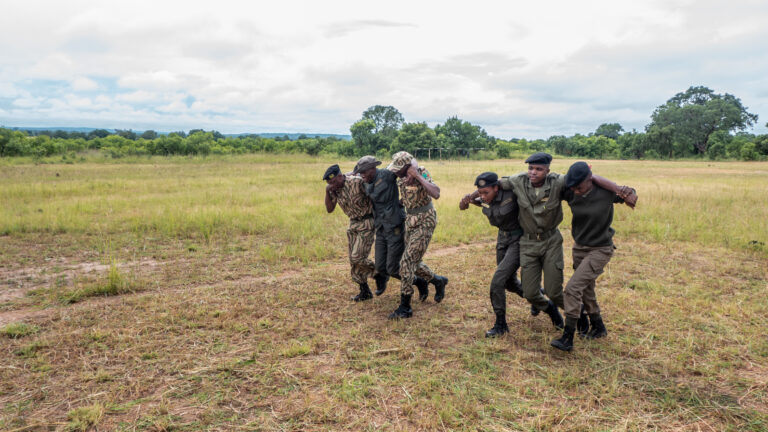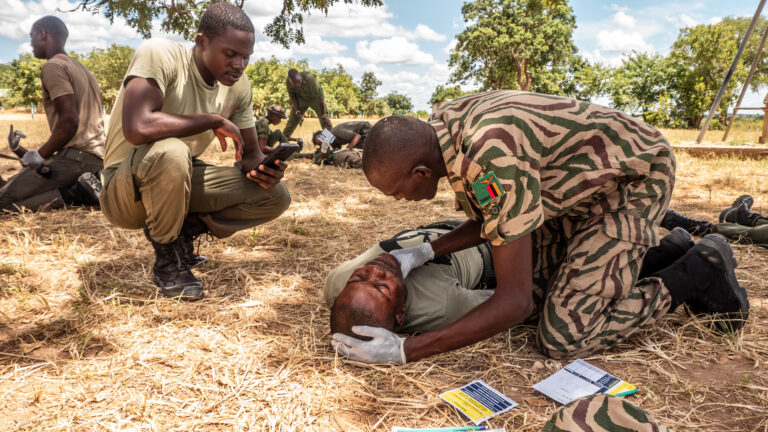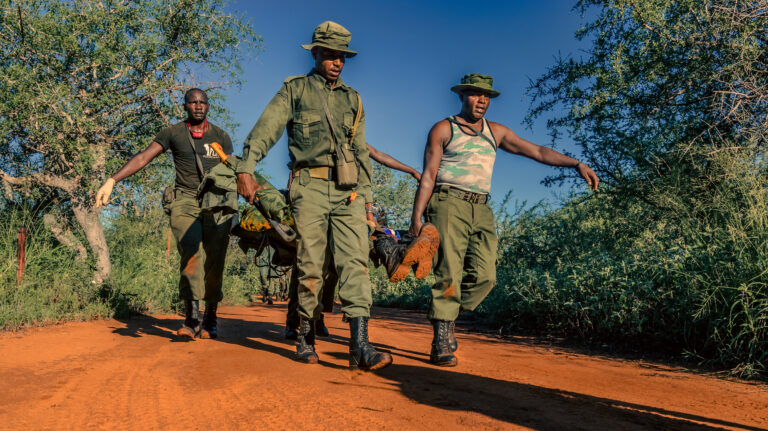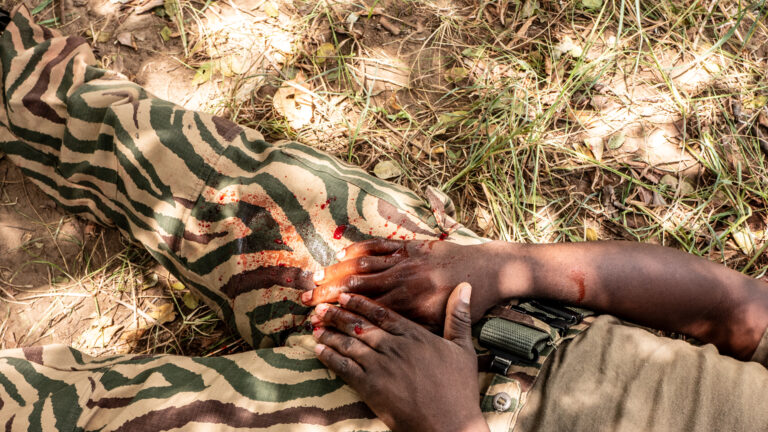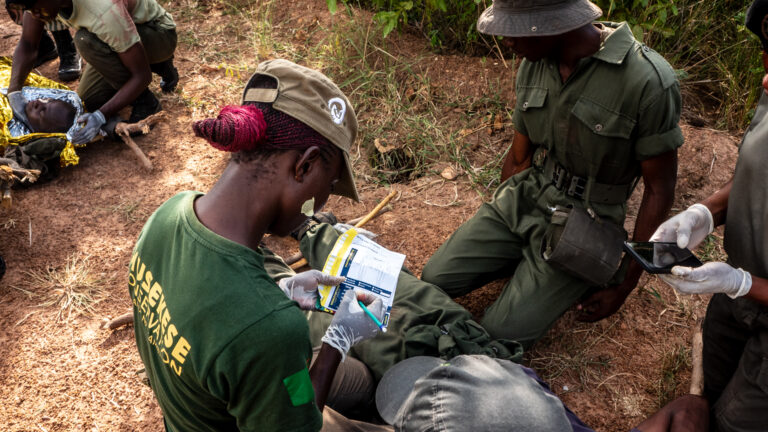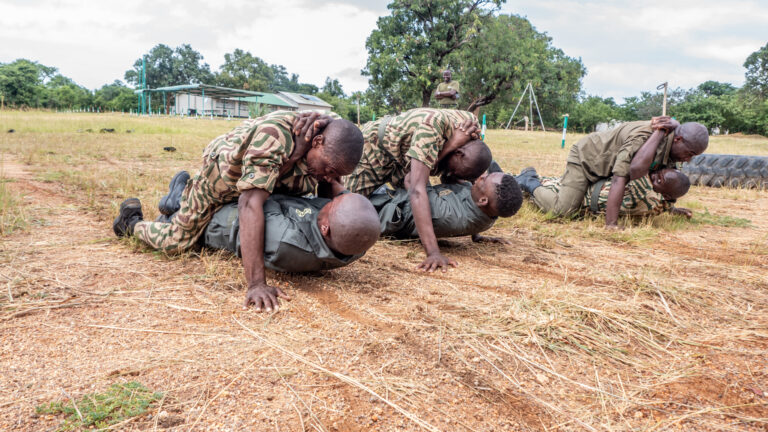In the Ranger Life Saver module, rangers learn to take immediate action when someone is badly injured and help is hours away. Over 6 intensive days, they develop non-invasive, lifesaving skills based on international best practice (C-TCCC and TECC), adapted to the realities of conservation work.
The focus is on what kills first: catastrophic bleeding, airway and breathing problems, and hypothermia from blood loss. Or as we teach it—stop the bleeding, keep them breathing, and keep them warm.
The module includes short, focused lectures to build foundational understanding, but around 85% of the time is spent on practical application. Training is delivered through drills, repetition, and realistic scenarios. Rangers work in their own field kit, under pressure, using what they would have with them on patrol.
This is not a medical qualification. It is a practical module that gives rangers the ability to buy time—enough to keep someone alive until evacuation or definitive care is possible.
Participants who meet the standard receive an RLS certificate, valid for 2 years. The techniques taught have already saved lives – of rangers, colleagues, and community members.

LEAD Conservation is a Committee for Tactical Emergency Casualty Care (C-TECC) Recognised Training Partner.
Practical Information
Entry requirements
This module is designed for active field rangers and conservation personnel who operate in remote or high-risk environments. No prior medical experience is required. However, participants must be physically fit, able to work under pressure, and willing to engage fully in hands-on training scenarios.

